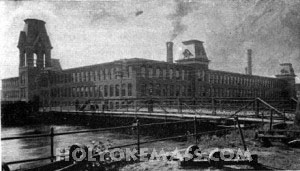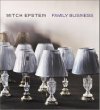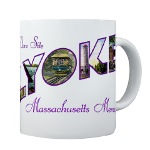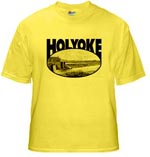by Laurel | May 3rd, 2010
May 3, 1899
A Holyoke, Mass., Concern Provides One for Employees.
Serve Midday Meals.
The Meals are of Good, Substantial food.
Just before reaching Holyoke’s railroad station the train stops at a little shed that bears the name of “Riverside,” says the Springfield, Mass. Republican. On the one side is a huge paper mill; on the other two new modern factory buildings, airy and light, stand back a little from the tracks. The ground in front is well loamed, the precursor of a bright green carpet the coming summer. In the first building, which bears the inscription, “The National Blank Book Company,” there are many interesting things to see; but none of more interest and none more novel than the bright and clean corner of a well-lighted basement which had been set apart for the serving of luncheon to those of the employees who desire to buy their midday meal there instead of going home during the noon hour.
There are about two hundred and fifty hands employed in the factory, one-half being women. In this cozy lunch corner are placed ten tables with chairs for each table, not expensive, but neat and clean. A long table near the entrance serves as a receptacle for the cooked food, and also as a place from which those who do not care to sit at the tables can get their food to take in their hands and carry with them if they so desire. There is no “rush” for tickets, as the tickets are sold upstairs at certain hours under the direction of the superintendent’s assistant.
Originally no meats were cooked, cold food with tea and coffee being sold only; but about two weeks ago an addition was made to the menu at the request of the employees who wanted something warm at noon. The attendance ranges from fifty to seventy-five, according to the weather. At the time of the blizzard there were over 125 at lunch. It is no part of the plan of the firm to make money on its serving of the food, but to charge just enough to approximately pay for the cost of the food and its preparation. The food served and the prices are shown by the following menu card, which appears on every table and is varied from day to day, the cards bearing the simple title “National Dining Room.”
Menu, 10-cent courses:
Monday–Roast Lamb, mashed potatoes, stewed tomatoes.
Tuesday–Boiled ham and spinach, boiled potatoes.
Wednesday–Stewed Chicken, boiled potatoes.
Thursday–Roast beef, mashed potatoes, stewed corn.
Friday–Clam chowder, sandwich and baked beans.
Extras–Ham, corned beef, cheese and sardine sandwiches, five cents each; pie, one cream puff, gingerbread, three crullers and fried pie, three cents each; glass milk, cup coffee or tea, three cents each; baked beans or soup, fie cents; two boiled eggs and potatoes, eight cents.
For waiters the young women of the factory are easily secured, they being allowed ten cents a meal for serving.
One woman has charge of the cooking and a gas range is used. Several of the employees of the Smith & White Co., adjacent, are allowed to share with the National company’s employees the benefit of the dining room. The lunch room is proving very popular and is growing in favor.
It is but one of the many ways in which the company cares for the men and women in its employ; for in another part of the basement is a place set apart for the storage of bicycles. Here are sixty little closets in two rows, half of them reserved for the women. Each of these is supplied with a lock and a little shelf to put tool bag, tools or any other thing desired. These are covered over the top with wire netting, preventing any of the tricks with wheels that one might feel disposed to play on a fellow employee. The cost of the closets is about two dollars apiece, and the company rents them to the employees for $1 a year for two years after which they become the property of the employee so long as he or she remains with the company. In all these little matters of convenience the members of the firm take interest and pride and, to an outsider at least, this attention appears to be conducive to the most cordial relations possible between employer and employee.
From The Evening Press, Grand Rapids Michigan.










What an interesting article, something we just take for granted, was so new a hundred years ago. I loved reading the meal and ‘extras’ prices, I wonder what their hourly wage was back then?
Thanks for posting!